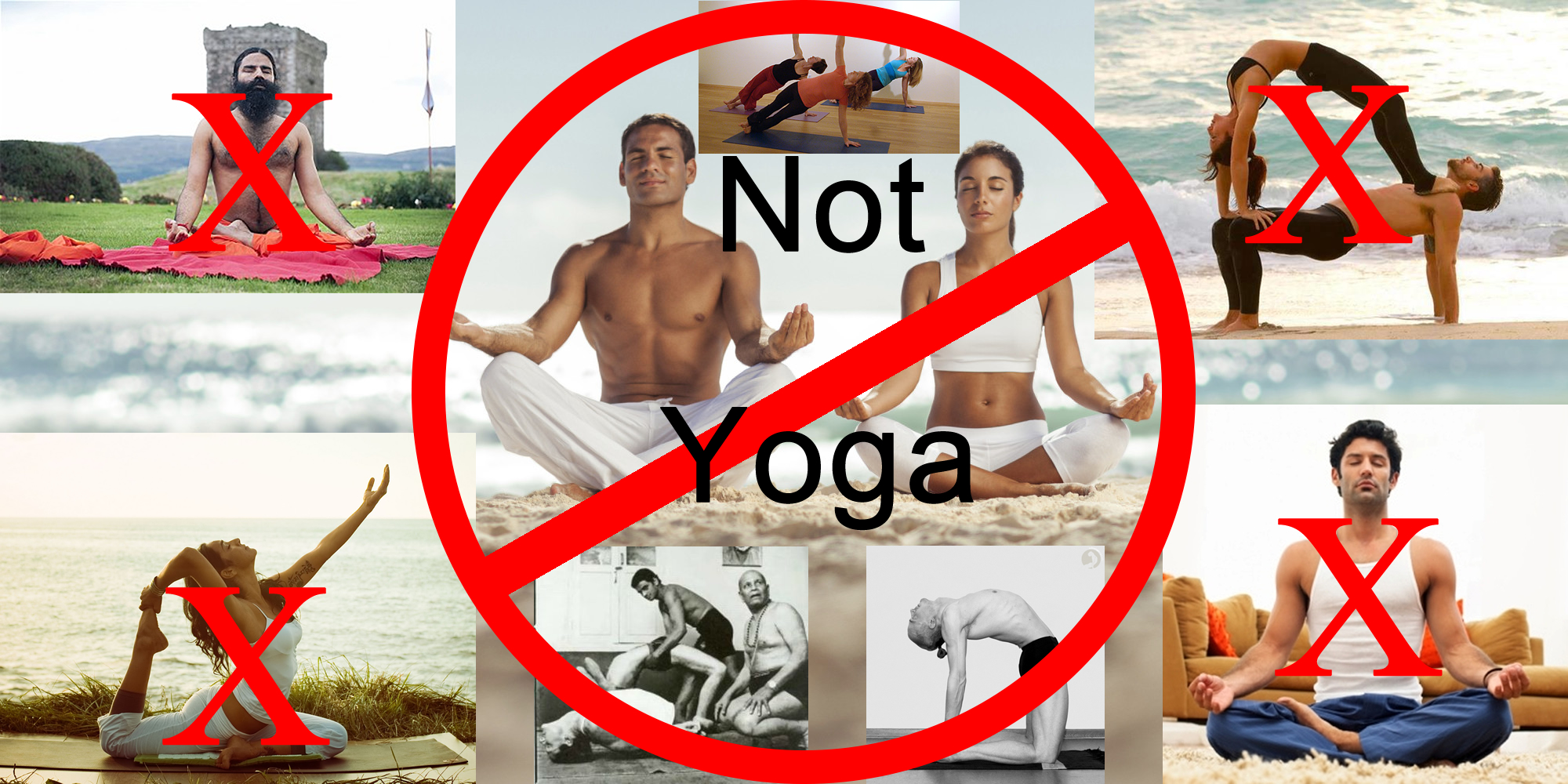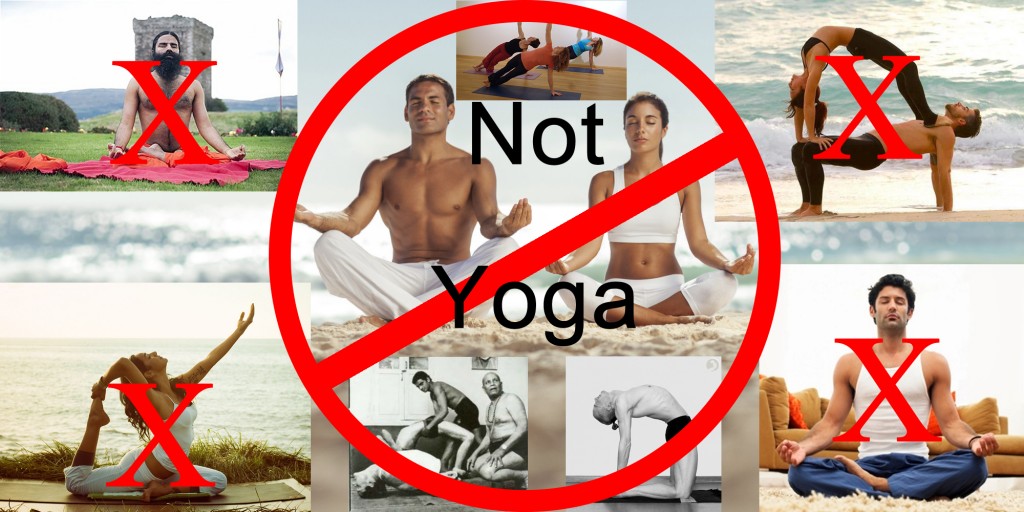As Wasatch School of Yoga’s Year of Yoga begins Staurday, a post on what Yoga is and is not would be helpful about now. None of what you see in the image above is Yoga.
Most of us have been taught that all of what you see above is Yoga, nope. Now, before you run to grab the pitchforks, torches, tar and feathers to run me out of town think about this: Yoga cannot be seen. What?!
Yoga cannot be seen. Patañjali writes this to define what Yoga is:
1.2 Yoga is the stilling of the modifications of the mind.
1.3 Then the Seer abides in its own true nature.
1.4 At other times, the Seer appears to take on the forms of the modifications of the mind.
 Yoga happens inside, out of sight; so, it cannot be seen. What then are all those ethics and postures and breathing exercises and meditations? Patañjali calls them the 8 limbs of Yoga. I’ve heard many descriptions of how these limbs work: That they’re like limbs on a tree or steps leading from one to another or rungs on a ladder. When someone first sees a statue of Nataraja, what they often first notice is his four arms. Nataraja has six limbs and those limbs allow him to act—there have been plenty of times in the last week when it would have been handy to have four hands!
Yoga happens inside, out of sight; so, it cannot be seen. What then are all those ethics and postures and breathing exercises and meditations? Patañjali calls them the 8 limbs of Yoga. I’ve heard many descriptions of how these limbs work: That they’re like limbs on a tree or steps leading from one to another or rungs on a ladder. When someone first sees a statue of Nataraja, what they often first notice is his four arms. Nataraja has six limbs and those limbs allow him to act—there have been plenty of times in the last week when it would have been handy to have four hands!
 Nataraja’s limbs, all six, allow him to dance. Nataraja means lord of the dance. His limbs are not, however, the dance itself. His limbs are the tools of his dance. The Yamas, Niyamas, Asanas, Pranayama, Pratyahara, Dharana, Dhyana and even Samadhi are not Yoga. They are the limbs of Yoga, the tools of Yoga. They are not even the only tools of Yoga! Bhakta Yoga uses love, devotion and service as its tools. Jnana Yoga uses knowledge, wisdom and contemplation as its tools. Karma Yoga (which includes Hatha Yoga) uses all action as its tool. Raja Yoga uses them all with meditation as its tools. So many tools! But, there’s more!
Nataraja’s limbs, all six, allow him to dance. Nataraja means lord of the dance. His limbs are not, however, the dance itself. His limbs are the tools of his dance. The Yamas, Niyamas, Asanas, Pranayama, Pratyahara, Dharana, Dhyana and even Samadhi are not Yoga. They are the limbs of Yoga, the tools of Yoga. They are not even the only tools of Yoga! Bhakta Yoga uses love, devotion and service as its tools. Jnana Yoga uses knowledge, wisdom and contemplation as its tools. Karma Yoga (which includes Hatha Yoga) uses all action as its tool. Raja Yoga uses them all with meditation as its tools. So many tools! But, there’s more!
In the Bhagavad Gita 2.48 & 50, Krishna tells Arjuna that “Yoga is evenness of mind” and that “That skill [evenness of mind] in action is Yoga.” This means any action performed with an evenness of mind—Yoga is the stilling of the modifications of the mind—is Yoga. The images at the top are not Yoga, they are possible tools of Yoga. They are places where Yoga may be experienced but so is washing the dishes or driving a car. If anything can become a tool of Yoga, then why take the time to practice on a mat at all?
Sadhana, devoted practice, is key to Yoga. When was the last time that your mind was even or still while driving or while washing the dishes? Devoting time to intentionally learning to still the mind is required to be able to carry that experience into everyday life so that every moment of life becomes Yoga, Everyday Yoga.
Tomorrow I’ll share a bit about the various tools of Yoga.
Jai Bhagwan!

